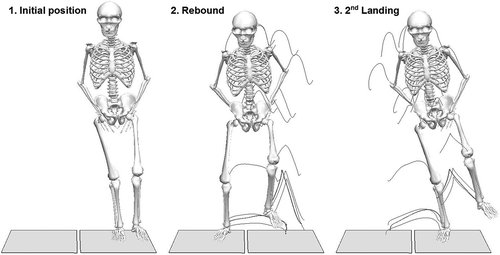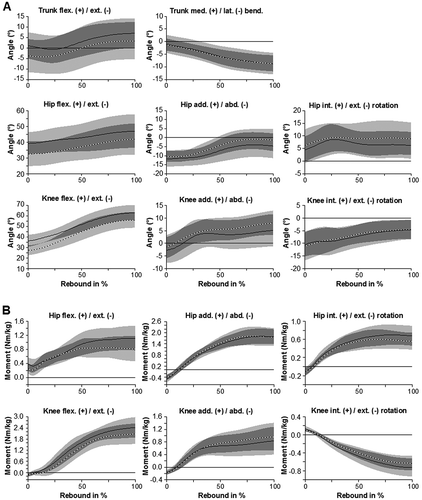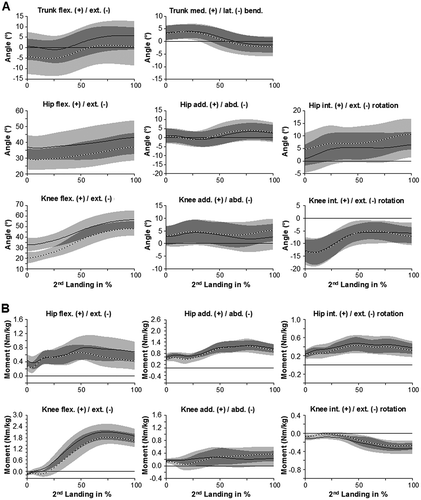Figures & data
Table 1. Background data for anterior cruciate ligament reconstructed group (ACLR) and control group (CTRL)
Figure 1. Passive spherical markers were attached with double-coated adhesive tape on specific landmarks on the body to define 3D coordinates of the body segments

Figure 2. Illustration of the novel one-leg standardised rebound side hop (SRSH). The task was performed by: (1) standing upright on one leg on a force plate before hopping laterally with respect to the standing leg over a distance normalised to 25% of body height marked by tape, and landing on another force plate for (2), a rebound back to the starting point (3), 2nd Landing, and ‘stick’ the landing

Figure 3. Ensemble trunk, hip, and knee kinematics (A) and kinetics (B) during the time-normalised Rebound for the affected leg of the ACLR group (solid line) and the dominant leg of the CTRL group (dotted line). Grey areas show the SD of the values for each group along the curve, and dark grey area shows where the SDs overlap between the groups. The horizontal line denotes the value of 0

Figure 4. Ensemble trunk, hip, and knee kinematics (A) and kinetics (B) during the time-normalised 2nd Landing for the affected leg of the ACLR group (solid line) and the dominant leg of the CTRL group (dotted line). Grey areas show the SD of the values for each group along the curve, and dark grey area shows where the SDs overlap between the groups. The horizontal line denotes the value of 0

Table 2. Within-session reliability with 95% CI and agreement for angles and moments (test session 1)
Table 3. Test-retest reliability with 95% CI and agreement for angles and moments for controls (dominant leg)
